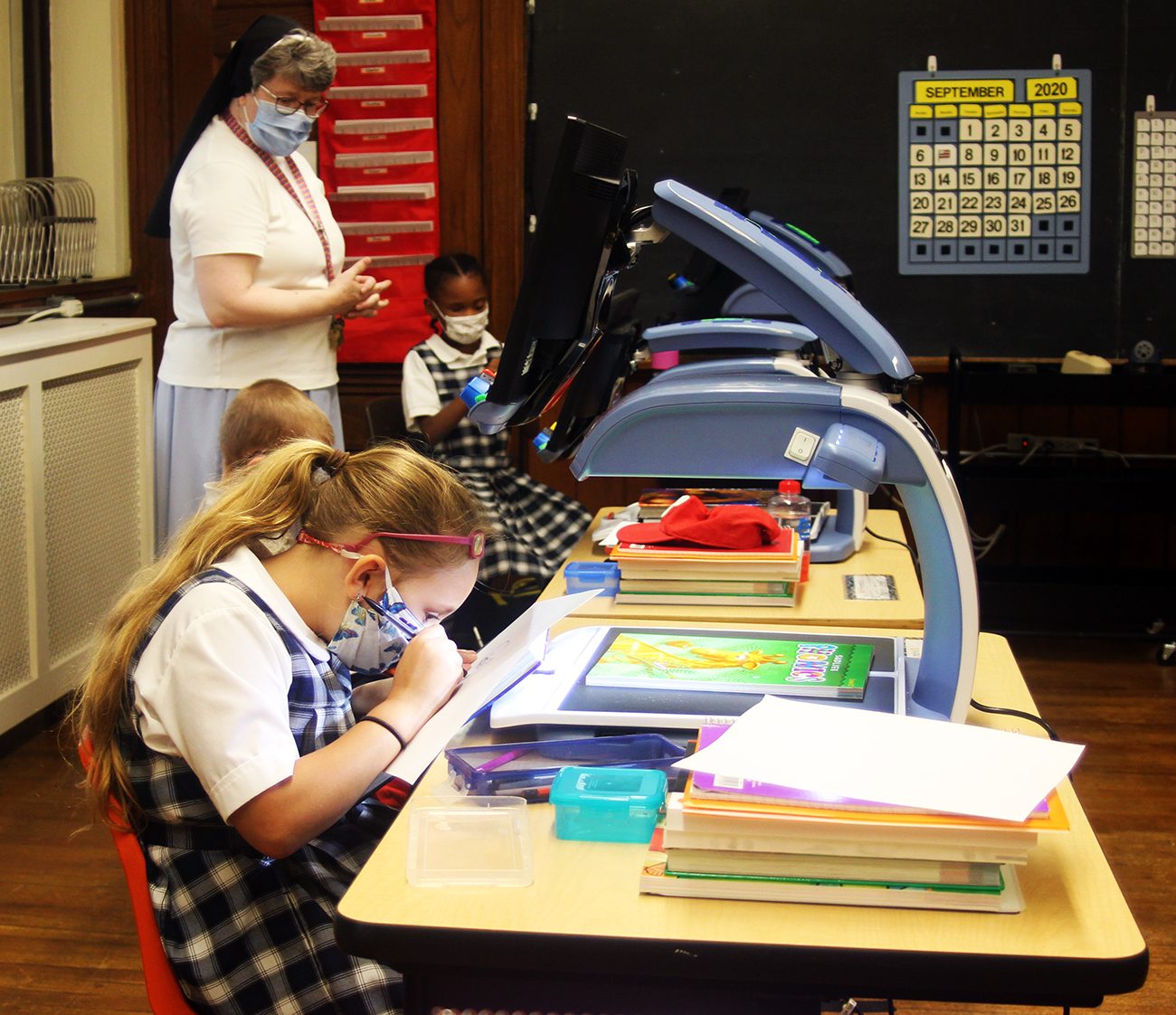An archdiocesan school for special education will relocate at the end of this academic year.
St. Lucy School for Children with Visual Impairments will move to a new site at St. Jerome Parish School in Northeast Philadelphia in time for 2022-2023 classes.
For the past 16 years, the school has been housed at Holy Innocents Parish in the city’s Juniata Park section, some six miles south of St. Jerome.
[hotblock]
The move was announced in a Feb. 23 letter from Dr. Danielle Heeney, archdiocesan director of special education, to the St. Lucy community.
Heeney said the move – undertaken after several months of “dialogue sessions” with St. Lucy community members – would enable the school “to improve services offered to students and to expand programming beyond its current curriculum.”
She confirmed that “current administrators, teachers and staff” – including longtime principal Sister Lisa Lettiere, I.H.M. — will “migrate with the program” to its new location.
The letter also expressed “deep and prayerful gratitude” to Holy Innocents pastor Father Thomas Higgins, Holy Innocents School principal Sister Regina Mullen, I.H.M. and that school’s faculty, staff and students for their support of St. Lucy over the years.
One of three archdiocesan schools of special education, St. Lucy School — founded in 1955 and named for the patroness of sight — offers early intervention support as well as full-time instruction for students in preschool, kindergarten and first through eighth grades, serving children from birth to age 13.
Along with its core curriculum, the school provides regular classes in art, music, technology and adapted physical education, attracting students from the five-county archdiocesan area as well as Delaware and New Jersey.
Tuition costs are substantially offset by the Catholic Foundation of Greater Philadelphia’s annual Catholic Charities Appeal, and by additional scholarships and funding supports.
Through a grant from the Ambassador’s Fund for Catholic Education, the school provides the area’s only full-time instruction for students with cortical visual impairment (CVI), which results from the brain’s inability to process information gathered by the eye. Now ranked as a leading cause of childhood visual impairment, CVI requires an intensive educational approach that is radically different from the typical pedagogy for those with other sight disorders.
PREVIOUS: St. Cornelius Parish ready for synod to breathe new life in church
NEXT: Bucks County Catholic school marks decade of ‘forming leaders for life’




Share this story